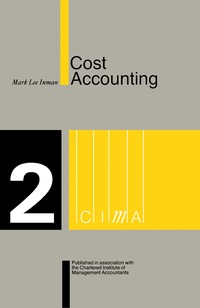Answered step by step
Verified Expert Solution
Question
1 Approved Answer
look at the picture for the question and Step - by - Step Guide to Solving Cash Flow Problems using the Indirect Method Step 1
look at the picture for the question and StepbyStep Guide to Solving Cash Flow Problems using the Indirect Method
Step : Prepare the Basic Framework
Start with Net Income: Begin the cash flow statement by stating the net income from the income statement.
Adjust for NonCash Transactions: Add back noncash expenses like depreciation and amortization because these decrease net income but do not involve cash outflows.
Step : Adjustments for Operating Activities
Add Back NonCash Expenses: Such as depreciation and amortization.
Adjust for Gains and Losses: Subtract gains included in the net income because they do not represent cash inflows from operating activities. Add back losses for the same reason.
Changes in Working Capital: Adjust for changes in operating assets and liabilities:
Accounts Receivable: If AR increased, subtract the change because it represents sales not yet received in cash. If AR decreased, add the change.
Inventory: If inventory increases, subtract the change; if it decreases, add the change.
Accounts Payable and Accrued Liabilities: If these increase, add the change; if they decrease, subtract the change.
Step : Cash Flow from Investing Activities
List Changes in Investment and Capital Assets: Identify cash flows associated with the purchase or sale of capital assets.
Purchase of Assets: Record as a cash outflow.
Sale of Assets: Record as a cash inflow, adjusting for any gains or losses reported in the income statement.
Step : Cash Flow from Financing Activities
Track Changes in Equity and Debt:
Issuance of Stock: Record as a cash inflow.
Repurchase of Stock Treasury Stock: Record as a cash outflow.
Borrowings and Repayments of Debt: Add new borrowings as inflows and repayments as outflows.
Payment of Dividends: Record as a cash outflow.
Step : Reconciliation of Net Cash Flows
Sum All Sections: Combine the total cash inflows and outflows from operating, investing, and financing activities to determine the net increase or decrease in cash.
Compare with Cash Balances: Ensure the net change in cash from the cash flow statement reconciles with the change in cash balances reported on the balance sheet from the beginning to the end of the period.
Step : Final Verification
Verification: Check that the calculated ending cash balance matches the actual cash balance reported on the balance sheet. Any discrepancies need to be investigated and corrected.
Step : Reporting and Analysis
Prepare the Final Statement: Format the data into a formal statement of cash flows.
Analyze Cash Flows: Provide insights into the financial health and liquidity of the business, analyzing trends over periods.
Example Problem Application
Now, suppose you have a problem where you need to prepare a cash flow statement for a company with the following details from their financial statements and additional notes:
Net Income: $
Depreciation Expense: $
Gain on Sale of Equipment: $
Increase in Accounts Receivable: $
Decrease in Inventory: $
Increase in Accounts Payable: $
Purchase of New Equipment: $
Sale of Old Equipment: $book value $
Issuance of New Stock: $
Dividends Paid: $
Using the steps outlined above, calculate the cash flows from operating, investing, and financing activities, and verify the ending cash balance.
This structured approach will guide you through solving virtually any cash flow problem, especially using the indirect method as discussed in your video transcripts.

Step by Step Solution
There are 3 Steps involved in it
Step: 1

Get Instant Access to Expert-Tailored Solutions
See step-by-step solutions with expert insights and AI powered tools for academic success
Step: 2

Step: 3

Ace Your Homework with AI
Get the answers you need in no time with our AI-driven, step-by-step assistance
Get Started


